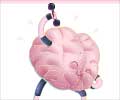Endurance exercise such as marathons, endurance triathlons may cause damage to the right ventricle of the heart, reveals study.

Dr André La Gerche (MD, PhD), a postdoctoral research fellow at St Vincent's Hospital, University of Melbourne, Australia, but who is currently based at the University Hospitals Leuven, Belgium, said: "It is most important that our findings are not over-extrapolated to infer that endurance exercise is unhealthy. Our data do not support this premise."
However, he said that the findings did suggest that there might be some athletes who might have been born with a susceptibility to develop damage as a result of long-term endurance exercise.
"Virtually all of the changes in the athletes' hearts had resolved one week after having taken part in a competitive event. In most athletes, a combination of sensible training and adequate recovery should cause an improvement in heart muscle function; that is, the heart rebuilds in a manner such that it is more capable of sustaining a similar exercise stimulus in the future. This positive training response can be over months rather than weeks," he explained. "The question from our research is whether there are some athletes in whom extreme exercise may cause injury from which the heart does not recover completely. If this occurs, affected athletes may be at risk of reduced performance – a cardiac 'over-training' syndrome – or it may cause arrhythmias. If this occurs, it is likely to affect only a minority of athletes, particularly those in whom more intense training fails to result in further improvements in their performance."
Dr La Gerche and his colleagues in Australia and Belgium recruited 40 elite athletes in Australia who were planning to compete in one of the four endurance events [2]. The athletes were already well trained (training intensely for more than 10 hours a week), performing well (having finished within the first 25% of the field in a recent event), and had no known heart problems.
The researchers studied the athletes, using echocardiography, MRI, and blood tests, at three time points: two to three weeks prior to the race, immediately after the race (within one hour), and 6-11 days after the race.
Advertisement
In contrast, the left ventricle, which, up to now has been the most studied in athletes, showed no changes.
Advertisement
He concluded: "It is important to note that this is one component of an evolving understanding of how the right ventricle is the 'Achilles heel' of heart function during exercise. We previously studied heart function during intense exercise and demonstrated that the load on the right ventricle (stress, work and oxygen demand) increases to a greater extent than in any of the other heart chambers. Professor Hein Heidbuchel, who I work with, has shown that the source of ventricular arrhythmias in affected athletes is almost always the right ventricle. Finally, it has been shown that intense exercise in rats causes inflammation, fibrosis and arrhythmias in the right but not the left ventricle. Hence, there are consistent messages, all implicating the right ventricle and yet it has been neglected in the vast majority of studies regarding cardiac changes in athletes. Now there is sufficient evidence to invest in the long-term prospective studies that are required."
In an accompanying editorial [3], Professor Sanjay Sharma, of St George's University London (UK), who is medical director of the London Marathon, writes that although the study is small, "the results provide food for thought and the data should be embraced to galvanise more detailed and longitudinal assessment of large groups of endurance athletes. The potential for such projects is enormous considering the colossal increase in participation rates in endurance events such as the marathon. The long-term conclusions of the authors may appear preposterous to some, but could prove to be the retrospective 'elephant in the room'."
In a statement for this press release, Prof Sharma said: "My personal feeling is that extreme endurance exercise probably does cause damage to the heart in some athletes. I don't believe that the human body is designed to exercise at full stretch for as long as 11 hours a day, so damage to the heart is not implausible. It is too early to say that taking part in endurance sports causes long-term damage to the right ventricle, but this study is an indication that it might cause a problem in some endurance athletes with a predisposition and, therefore, it should be studied further."
Source-Eurekalert














